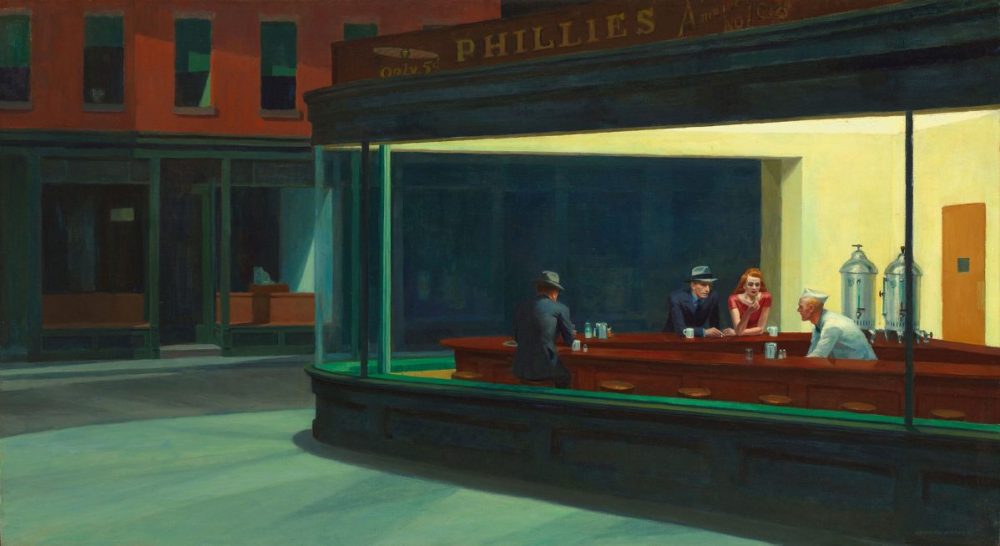Nighthawks
Fundamental Paintings to Understand the History of Painting
We could make this publication thanks to small donations. How is 3 minutos de arte supported?
Nighthawks (1942). Edward Hopper
Oil on canvas. 84 cm x 152 cm
Art Institute of Chicago Building. Chicago, United States
“Unconsciously, probably I was painting loneliness in a big city,” said Hopper about this work, the most famous one which has become a symbol of the loneliness of the contemporary metropolis and an icon of art of the 20th century.
Hopper painted the loneliness of the current world.
His work can be defined with that only phrase. We hardly find a human figure in his paintings, and when there is more than one we can notice the self-absorption, alienation —loss of identity— the impossibility of communication and the anguish it provokes.
Hopper painted the silence. Painted cities that are deserts. Real spaces that are turned into scenarios that seem part of a dream. Mysterious, unrestful scenarios like those of silent nightmares. Climates that remind us at times of the climates of the metaphysical paintings of Giorgio de Chirico.
While in Europe Cubism, Fauvism and Abstract Art were emerging, Hopper was fascinated with the Impressionists. He learnt from them the skillful handling of light. And maybe because of that his work achieves a dramatic tension with sophisticated chiaroscuro games or with cold, blunt artificial lights.
In each painting we can see his dark and melancholic character, his austerity and patience.
He thought communication was impossible, and the frustration of not being able to be understood by the person next to us or the thousands of people around us was such that the artist said at the end of his life with a melancholic tone: “I was never able to paint what I set out to paint.”
Yes, that is what Edward Hopper said.
Recommended links:
Timeline: Moments of Edward Hopper.
Hopper and Loneliness in the Modern World.
“If you could say it in words, there would be no reason to paint.”
American Gothic (1930), Grant Wood.
Cristina’s World (1948), Andrew Wyeth.
You can also find more material using the search engine.




0 Comments